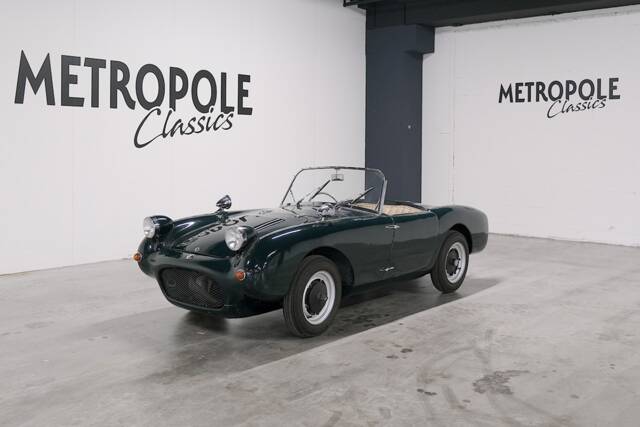Berkeley T60 classic cars for sale
The Berkeley T60 combines the charm of 1950s British microcar engineering with innovative front-wheel drive and lightweight construction, making it a sought-after piece for collectors of distinctive small sports cars from the post-war era.
Search results

1960 | Berkeley T60/4
Berkeley Sports SE 328 Convertible 1960 M0338
History of the Berkeley T60
Berkeley Cars Ltd, based in Biggleswade, Bedfordshire, played a pioneering role in Britain’s microcar boom during the late 1950s. The company set out to create a lightweight, affordable sporting car using motorcycle technology. Between 1956 and 1960, Berkeley manufactured over 4,100 vehicles, focusing on efficient, front-wheel-drive models with two-cylinder engines. Facing rising production costs and fierce competition, Berkeley ceased operations in 1960, but their vehicles—especially the T60—are remembered as clever solutions to economical motoring in post-war Britain.
Model History
The T60 was part of a lineage of microcars developed by Berkeley from 1956. Earlier Berkeley models, such as the Sports and SE328, also focused on motorcycle engines and minimalist construction. The T60 distinguished itself by being a three-wheeled model, making it accessible to drivers with motorcycle licences in the UK at the time. The T60 series did not have a direct successor after Berkeley's liquidation, but its design philosophy influenced many later microcars.
Highlights of the Berkeley T60
The T60’s most notable features include its fibreglass monocoque body, extremely low weight, and the use of motorcycle-based two-stroke engines, making it nimble and inexpensive to run. The three-wheeled layout was a practical solution for post-war Britain, fitting specific licensing regulations and tax incentives. The front-wheel drive and sport-oriented design helped distinguish the T60 from more utilitarian microcars of its time.
Technical Data
Special Editions and Collectible Models
Specific special editions of the T60 are rare, as most cars were produced to order with minor factory variations depending on period and engine configuration. Some versions equipped with higher-displacement engines or unique trim may be considered more collectible among enthusiasts.
Weak Spots and Common Issues
Due to its motorcycle-derived mechanicals, the T60 requires regular attention to engine tuning and lubrication. The fibreglass body, while resistant to rust, may suffer from age-related cracking or delamination. Parts for the motorcycle engines and bespoke chassis can be difficult to source, with expertise needed to keep the front-wheel-drive system in good order. Buyers should check for modifications or non-original repairs, which are common in surviving examples.
Engine and Performance, Transmission and Handling
The T60’s powertrain provided lively acceleration for its size, aided by the minimal curb weight. Front-wheel drive brought unexpected agility for a microcar, while the motorcycle-sourced engine delivered a brisk, albeit noisy, driving experience. Handling is direct, although comfort is secondary to lightweight construction. The three-wheel design and narrow track require attention in wet conditions, but spirited drivers will appreciate its responsiveness. Berkeley T60 variants with larger displacement engines, such as the 692 cc unit, are especially prized for their relative power and improved performance.
Interior, Comfort, Exterior and Design
The T60’s design is defined by its fibreglass monocoque, which allowed for distinctive rounded contours and minimal weight. Interior appointments are sparse, with only essential instruments and controls contributing to a genuine pared-back driving environment. The compact two-seat layout is functional. Externally, the T60’s low silhouette, small wheels, and clean lines provided a striking appearance for such an affordable car. Factory options and accessories were minimal, though some cars were fitted with bespoke trim or colour schemes at the buyer’s request.
Other relevant features
With its motorcycle licensing compatibility in period UK legislation and its role as an affordable, practical sports car solution in post-war Britain, the T60 continues to attract enthusiasts for its technical charm and historical context. Its unique engineering legacy also makes it a talking point at classic car gatherings.
Summary
The Berkeley T60 is an exceptional example of Britain’s microcar ingenuity at the close of the 1950s. Combining motorcycle-derived engineering, lightweight fibreglass construction, and innovative design within a three-wheeled package, the T60 stands out as a distinct and engaging classic. Today, it dominates market interest for the Berkeley marque, testament to its enduring appeal among classic car aficionados.
